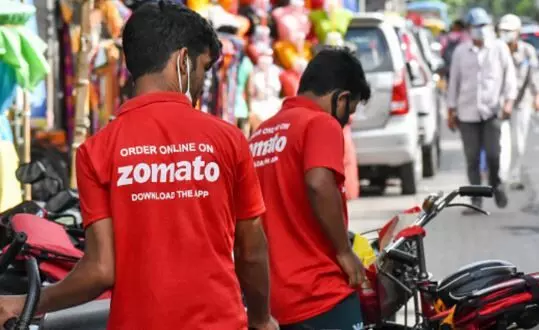Zomato's Welcome Profits: A Question Lingers—How Enduring Will This Triumph Prove?
Amidst a chorus of delight from investors, founders, and the startup community, Zomato's unexpected profit-making feat has taken center stage.
image for illustrative purpose

Amidst a chorus of delight from investors, founders, and the startup community, Zomato's unexpected profit-making feat has taken center stage. The swift profitability achieved by the company has exceeded all expectations, even those of Zomato's own team who had predicted profits to materialize at least three quarters down the line. This outcome has pleasantly surprised many.
The journey to this point may not be as intricate as rocket science, as Zomato's CEO Deepinder Goyal pointed out. The strategic path to profitability was narrowed down to two key objectives: augmenting profits in food delivery and curbing losses in the quick commerce (Blinkit) division.
Focusing on the progress of the food delivery sector, there are three pivotal metrics that gauge its performance. The Gross Order Value (GOV) is the total money spent by users on food orders, and it has risen by 11% over the previous quarter. While some of this increase can be attributed to seasonal factors like school holidays, the Indian Premier League (IPL), and other summer events in the initial financial quarter, it's noteworthy that the GOV remained stagnant at approximately ₹6,500 crores throughout the previous year. This indicates positive momentum this year.
However, an important question arises: Is the rise in GOV a result of a surge in users ordering food? To address this, the Monthly Transacting Users (MTU) metric comes into play. Around 17.5 million people, on average, use the platform monthly. Interestingly, this number hasn't seen much change, with Zomato maintaining 17.5 million monthly transacting users for the past nine months. This lack of growth prompts speculation about the potential saturation of the market, raising concerns about the ability to attract new users.
Comparing this to the penetration levels of e-commerce, which stand at 19% for Indian households, a parallel is drawn. The similarity raises questions about how much untapped potential remains in the food delivery segment, particularly within urban areas. Zomato's decision to exit 225 cities might be attributed to the realization that the business was not yielding the desired results in those areas.
To capitalize on existing users, Zomato is leveraging the Average Order Value (AOV), a crucial parameter. The cost to the company for delivering an order worth ₹200 or ₹400 is roughly the same, but higher order values yield greater commissions. While Zomato hasn't broken down this data, it has noted a 'modest uptick' in the AOV, which was around ₹407 in FY23. Additionally, Nomura's analysis indicates an increase in the frequency of orders per user from 3 to 3.4 per month, possibly attributed to strategies like Zomato Gold.
Zomato Gold, a subscription service, has undergone multiple iterations over the years. Its recent relaunch highlights features like 'On Time Guarantee' and priority access to restaurants during peak times. The revamped Zomato Gold program seems to be yielding results; orders from Gold subscribers already constitute 30% of the GOV in food delivery. This significant contribution suggests the program's effectiveness.
In the domain of quick commerce, Zomato's acquisition of Blinkit in 2022 initially drew skepticism from investors due to its loss-making nature. However, this segment is turning around. The GOV has doubled over the past year to ₹2,000 crores, while the AOV has risen to ₹582. The 'contribution' metric, representing profits earned after deducting delivery costs, has become positive when calculated as a percentage of GOV. Reductions in delivery rider payouts seem to have contributed to this transformation, potentially pleasing shareholders while raising questions about gig workers' welfare.
With only 4 million households as Monthly Transacting Users on Blinkit compared to 17.5 million for Zomato, there's substantial growth potential in the quick commerce sector. Zomato's CEO Deepinder Goyal even speculates that this sector might become more significant to shareholders than food delivery in a decade.
While Zomato's success is evident, a twist emerges. Despite the acclaim, Zomato still reported a loss of ₹15 crores. The touted ₹2 crore profit comes with an asterisk, as it's connected to a tax provision called "deferred tax" worth ₹17 crores. Deferred tax allows present losses to offset future taxes when the company becomes profitable. Although the exact reasons for Zomato's deferred tax benefit remain undisclosed, it's a recurring trend for the company.
The key question remains: Can Zomato sustain profits that may have emerged due to tax benefits? Considering the narrowing losses even without considering deferred tax, Zomato's efforts to trim expenses augur well for its sustainability.
In sum, Zomato's profitable journey reflects careful strategies, effective subscription models like Zomato Gold, and adept management of its business arms. While challenges remain, the company's ability to capitalize on existing users, coupled with improving quick commerce prospects, paints a promising picture for its future.
Disclaimer: This article is founded on assumptions grounded in factual information. Readers are strongly advised against making decisions based on this content alone; seeking professional investment guidance is recommended.

